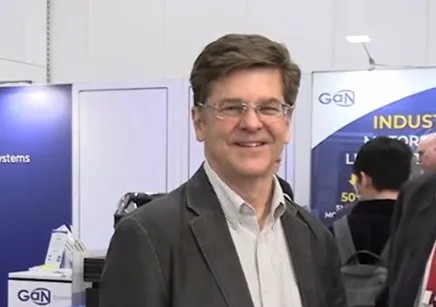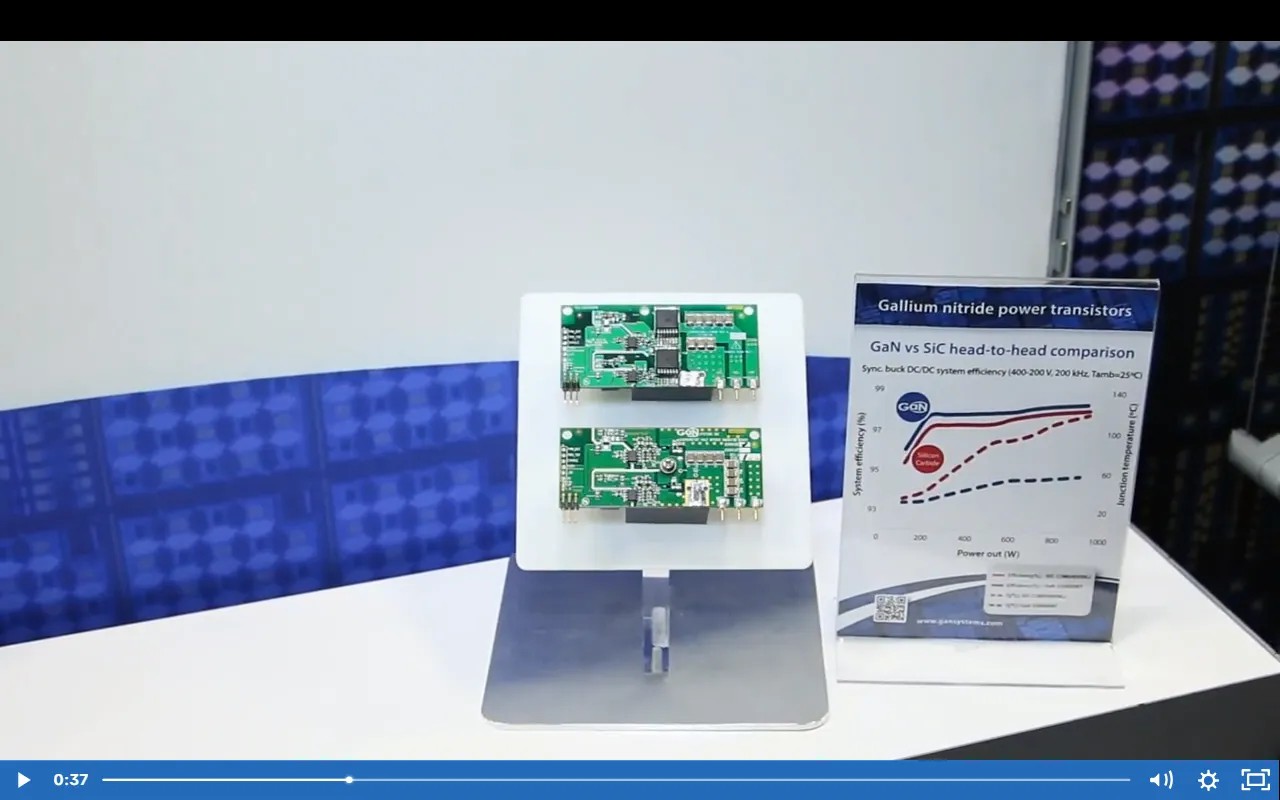
- English
- Español
- Português
- русский
- Français
- 日本語
- Deutsch
- tiếng Việt
- Italiano
- Nederlands
- ภาษาไทย
- Polski
- 한국어
- Svenska
- magyar
- Malay
- বাংলা ভাষার
- Dansk
- Suomi
- हिन्दी
- Pilipino
- Türkçe
- Gaeilge
- العربية
- Indonesia
- Norsk
- تمل
- český
- ελληνικά
- український
- Javanese
- فارسی
- தமிழ்
- తెలుగు
- नेपाली
- Burmese
- български
- ລາວ
- Latine
- Қазақша
- Euskal
- Azərbaycan
- Slovenský jazyk
- Македонски
- Lietuvos
- Eesti Keel
- Română
- Slovenski
- मराठी
- Srpski језик
GaN and SiC: Coexistence or Substitution?
2024-08-28
The push for higher power density and efficiency has become a primary driver of innovation across multiple industries, including data centers, renewable energy, consumer electronics, electric vehicles, and autonomous driving technologies. In the realm of wide bandgap (WBG) materials, Gallium Nitride (GaN) and Silicon Carbide (SiC) are currently the two core platforms, viewed as pivotal tools leading power semiconductor innovation. These materials are profoundly transforming the power electronics industry to address the ever-increasing demand for power.
In fact, some leading companies in the SiC industry are also actively exploring GaN technology. In March of this year, Infineon acquired Canadian GaN startup GaN Systems for $830 million in cash. Likewise, ROHM recently showcased its latest SiC and GaN products at PCIM Asia, with particular emphasis on their EcoGaN brand’s GaN HEMT devices. Conversely, in August 2022, Navitas Semiconductor, which originally focused on GaN technology, acquired GeneSiC, becoming the only company dedicated to the next-generation power semiconductor portfolio.
Indeed, GaN and SiC exhibit some overlap in performance and application scenarios. Therefore, it is crucial to evaluate the application potential of these two materials from a system perspective. Although different manufacturers may have their own viewpoints during the R&D process, it is essential to comprehensively assess them from multiple aspects, including development trends, material costs, performance, and design opportunities.
What are the Key Trends in the Power Electronics Industry that GaN Meets?
Jim Witham, CEO of GaN Systems, has not chosen to step back like other executives of acquired companies; instead, he continues to make frequent public appearances. Recently, in a speech, he emphasized the importance of GaN power semiconductors, noting that this technology will help power system designers and manufacturers address three key trends currently transforming the power electronics industry, with GaN playing a crucial role in each trend.

GaN Systems CEO Jim Witham
First, the issue of energy efficiency. It is predicted that global power demand will surge by over 50% by 2050, making it imperative to optimize energy efficiency and accelerate the transition to renewable energy. The current transition not only focuses on energy efficiency but also extends to more challenging aspects such as energy independence and integration with the mainstream power grid. GaN technology offers significant energy-saving advantages in energy and storage applications. For example, solar microinverters using GaN can generate more electricity; GaN’s application in AC-DC conversion and inverters can reduce energy wastage in battery storage systems by up to 50%.
Second, the electrification process, particularly in the transportation sector. Electric vehicles have always been the focus of this trend. However, electrification is expanding to two-wheel and three-wheel transportation (such as bicycles, motorcycles, and rickshaws) in densely populated urban areas, especially in Asia. As these markets mature, the advantages of GaN power transistors will become more prominent, and GaN will play a crucial role in improving quality of life and environmental protection.
Finally, the digital world is undergoing massive changes to meet the real-time data demands and rapid development of artificial intelligence (AI). Current power conversion and distribution technologies in data centers cannot keep up with the rapidly increasing demands brought by cloud computing and machine learning, especially power-hungry AI applications. By achieving energy savings, reducing cooling requirements, and enhancing cost-effectiveness, GaN technology is reshaping the power supply landscape of data centers. The combination of generative AI and GaN technology will create a more efficient, sustainable, and robust future for data centers.
As a business leader and staunch environmental advocate, Jim Witham believes that the rapid advancement of GaN technology will significantly impact various power-dependent industries and have profound implications on the global economy. He also concurs with market predictions that GaN power semiconductor revenue will reach $6 billion within the next five years, noting that GaN technology offers unique advantages and opportunities in the competition with SiC.
How Does GaN Compare to SiC in Terms of Competitive Edge?
In the past, there were some misconceptions about GaN power semiconductors, with many believing they were more suitable for charging applications in consumer electronics. However, the primary distinction between GaN and SiC lies in their voltage range applications. GaN performs better in low and medium voltage applications, while SiC is mainly used for high voltage applications exceeding 1200V. Nevertheless, the choice between these two materials involves considering voltage, performance, and cost factors.
For instance, at the 2023 PCIM Europe exhibition, GaN Systems showcased GaN solutions that demonstrated significant advancements in power density and efficiency. Compared to SiC transistor designs, GaN-based 11kW/800V onboard chargers (OBC) achieved a 36% increase in power density and a 15% reduction in material costs. This design also integrates a three-level flying capacitor topology in a bridgeless totem-pole PFC configuration and dual active bridge technology, reducing voltage stress by 50% using GaN transistors.
In the three key applications of electric vehicles—onboard chargers (OBC), DC-DC converters, and traction inverters—GaN Systems has collaborated with Toyota to develop an all-GaN car prototype, provided production-ready OBC solutions for the American EV startup Canoo, and partnered with Vitesco Technologies to develop GaN DC-DC converters for 400V and 800V EV power systems, offering more choices for automakers.
Jim Witham believes that customers currently reliant on SiC are likely to rapidly switch to GaN for two reasons: the limited availability and high cost of materials. As power demands increase across various industries, from data centers to automotive, an early transition to GaN technology will enable these enterprises to shorten the time needed to catch up with competitors in the future.
From a supply chain perspective, SiC is more expensive and faces supply constraints compared to GaN. Since GaN is produced on silicon wafers, its price decreases rapidly with increasing market demand, and future price and competitiveness can be more accurately predicted. Conversely, the limited number of SiC suppliers and long lead times, typically up to a year, could increase costs and impact the demand for automotive manufacturing beyond 2025.
In terms of scalability, GaN is almost “infinitely” scalable because it can be manufactured on silicon wafers using the same equipment as billions of CMOS devices. GaN can soon be produced on 8-inch, 12-inch, and even 15-inch wafers, whereas SiC MOSFETs are typically manufactured on 4-inch or 6-inch wafers and are just beginning to transition to 8-inch wafers.
In terms of technical performance, GaN is currently the world’s fastest power switching device, offering higher power density and output efficiency than other semiconductor devices. This brings significant benefits to consumers and businesses, whether in smaller device sizes, faster charging speeds, or reduced cooling costs and energy consumption for data centers. GaN exhibits enormous advantages.
Systems built with GaN demonstrate significantly higher power density compared to SiC. As GaN adoption spreads, new power system products with smaller sizes are continually emerging, whereas SiC cannot achieve the same level of miniaturization. According to GaN Systems, the performance of their first-generation devices has already surpassed that of the latest fifth-generation SiC semiconductor devices. As GaN performance improves by 5 to 10 times in the short term, this performance gap is expected to widen.
Additionally, GaN devices possess significant advantages such as low gate charge, zero reverse recovery, and flat output capacitance, enabling high-quality switching performance. In mid to low voltage applications below 1200V, GaN’s switching losses are at least three times lower than SiC. From a frequency perspective, most silicon-based designs currently operate between 60kHz and 300kHz. Although SiC has improved in frequency, GaN’s improvements are more pronounced, achieving 500kHz and higher frequencies.
Since SiC is typically used for 1200V and higher voltages with only a few products suitable for 650V, its application is limited in certain designs, such as 30-40V consumer electronics, 48V hybrid vehicles, and data centers, all of which are important markets. Therefore, SiC’s role in these markets is limited. GaN, on the other hand, excels in these voltage levels, making significant contributions in data centers, consumer electronics, renewable energy, automotive, and industrial sectors.
To help engineers better understand the performance differences between GaN FETs (Field Effect Transistors) and SiC, GaN Systems designed two 650V, 15A power supplies using SiC and GaN respectively, and conducted detailed comparative tests.

GaN vs SiC Head-to-head Comparison
By comparing the GaN E-HEMT (Enhanced High Electron Mobility Transistor) with the best-in-class SiC MOSFET in high-speed switching applications, it was found that when used in synchronous buck DC-DC converters, the converter with GaN E-HEMT exhibited much higher efficiency than the one with SiC MOSFET. This comparison clearly demonstrates that GaN E-HEMT outperforms the top SiC MOSFET in key metrics such as switching speed, parasitic capacitance, switching losses, and thermal performance. Additionally, compared to SiC, GaN E-HEMT shows significant advantages in achieving more compact and efficient power converter designs.
Why Could GaN Potentially Outperform SiC Under Certain Conditions?
Today, traditional silicon technology has reached its limits and cannot offer the numerous advantages that GaN possesses, while SiC’s application is restricted to specific usage scenarios. The term “under certain conditions” refers to the limitations of these materials in specific applications. In a world increasingly reliant on electricity, GaN not only improves existing product supply but also creates innovative solutions that help businesses stay competitive.
As GaN power semiconductors transition from early adoption to mass production, the primary task for business decision-makers is to recognize that GaN power semiconductors can offer a higher level of overall performance. This not only helps customers increase market share and profitability but also effectively reduces operating costs and capital expenditures.
In September of this year, Infineon and GaN Systems jointly launched a new fourth-generation Gallium Nitride platform (Gen 4 GaN Power Platform). From the 3.2kW AI server power supply in 2022 to the current fourth-generation platform, its efficiency not only surpasses the 80 Plus Titanium efficiency standard, but its power density has also increased from 100W/in³ to 120W/in³. This platform not only sets new benchmarks in energy efficiency and size but also offers significantly superior performance.
In summary, whether it is SiC companies acquiring GaN companies or GaN companies acquiring SiC companies, the underlying motivation is to expand their market and application fields. After all, GaN and SiC both belong to wide bandgap (WBG) materials, and future fourth-generation semiconductor materials like Gallium Oxide (Ga2O3) and Antimonides will gradually emerge, creating a diversified technological ecosystem. Therefore, these materials do not replace each other but rather collectively drive industry growth.**




